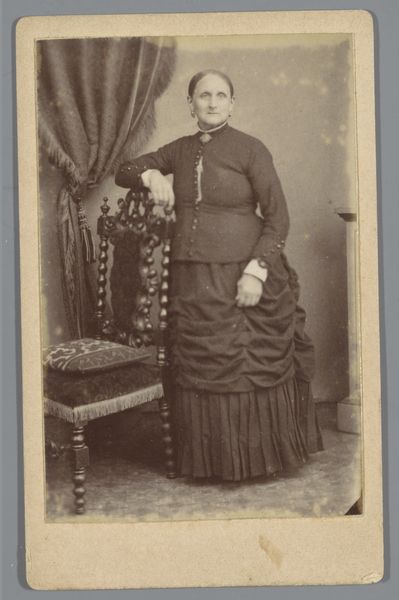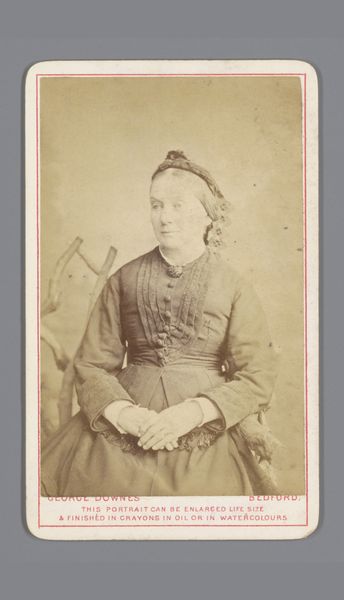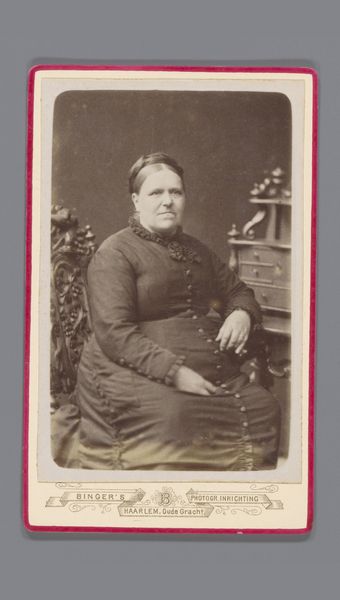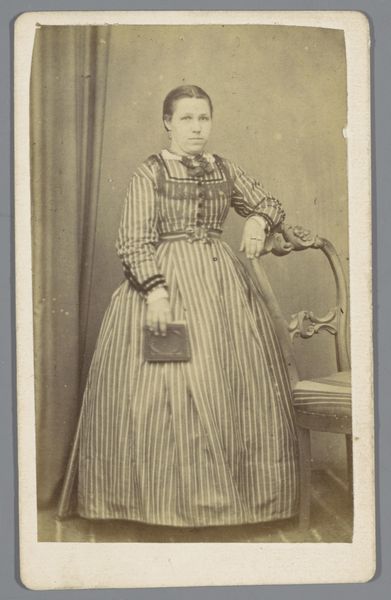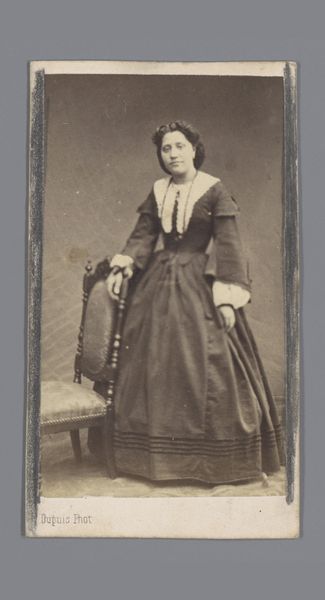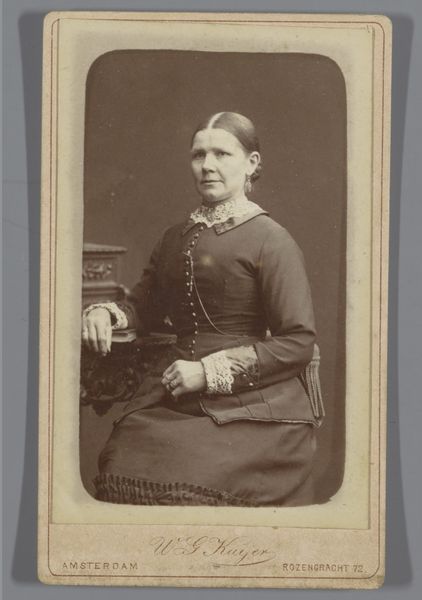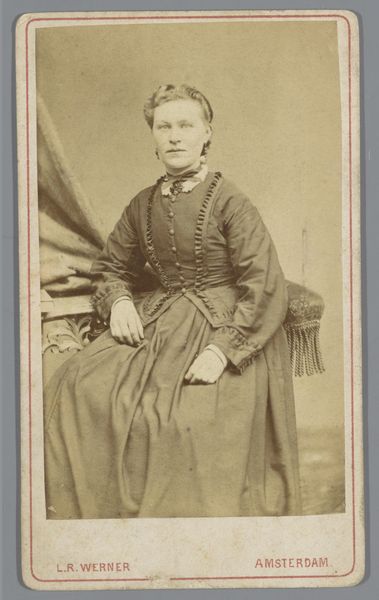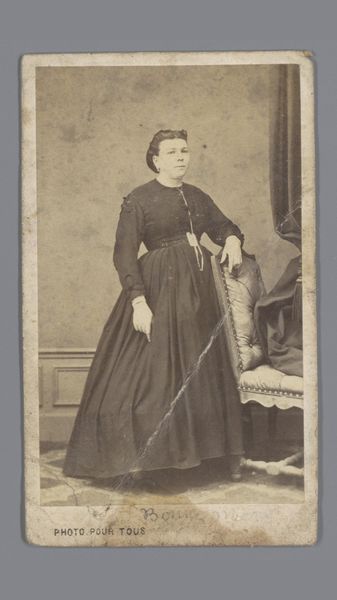
photography, gelatin-silver-print
#
portrait
#
photography
#
historical fashion
#
gelatin-silver-print
#
genre-painting
Dimensions: height 100 mm, width 61 mm
Copyright: Rijks Museum: Open Domain
Curator: This is an interesting piece, a gelatin silver print photograph entitled "Portret van een onbekende vrouw, staande naast een stoel," placing its creation somewhere between 1855 and 1885. It depicts an unknown woman. Editor: Immediately, I’m drawn to the almost palpable sense of stillness and perhaps even weariness in this image. Her posture, the way she rests her hand on the chair, there’s a weight to it. Curator: It's compelling to consider the context. Gelatin silver prints revolutionized photography. The process allowed for mass production, bringing photographic portraits within reach of the middle class. It speaks to a democratizing shift in representation. Editor: Indeed. And the very act of having one's portrait taken in this era carries its own symbolic weight. This wasn't just about capturing a likeness; it was about cementing one's place in society, conveying status and respectability. Notice the formality of her dress, the subtle ruffles, and her jewelry. It speaks of aspirations and social positioning. Curator: It’s equally vital to recognize the labor involved. From the photographer meticulously preparing the chemicals and arranging the scene to the subject enduring a long exposure, posing in those restricting clothes, so very heavy perhaps in warmer weather. This speaks to the social performance embedded in portraiture and, of course, what's unseen in the final print: how did women experience the limitations on mobility as an embodied restriction? Editor: Thinking of what’s not seen is key here; what is absent. Who was this woman, what was her story, did she achieve all of these projected societal aims? The chair itself also becomes a potent symbol – it’s a prop, a support, but also indicative of a domestic sphere. It almost boxes her into place. Curator: Fascinatingly framed by this perspective! Examining how photography developed technologically, combined with those material restrictions and expectations, exposes how it was very much a tool used to uphold certain class structures and cultural standards, but there were still methods that subjects such as this unknown woman and the photographer employed to exert themselves. Editor: I appreciate the reminders here that there are multiple narratives to be interpreted, even within the still frame of a simple photograph; many levels of aspiration and desire exist here. Curator: Yes, examining the interplay of medium, labour and social forces offers us nuanced access to these stories and reveals them to us in material and psychological frames.
Comments
No comments
Be the first to comment and join the conversation on the ultimate creative platform.
